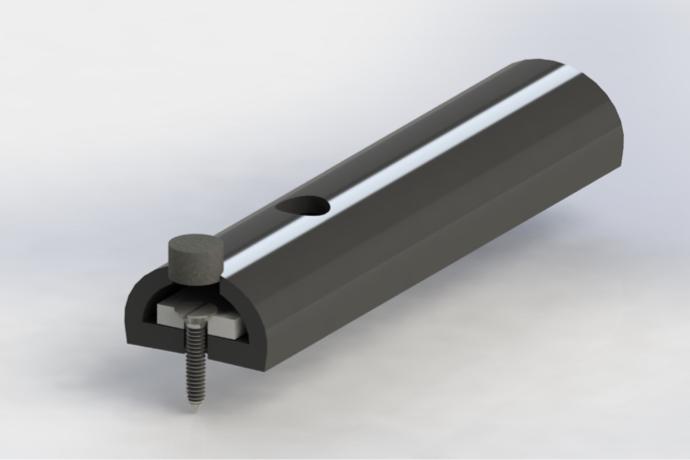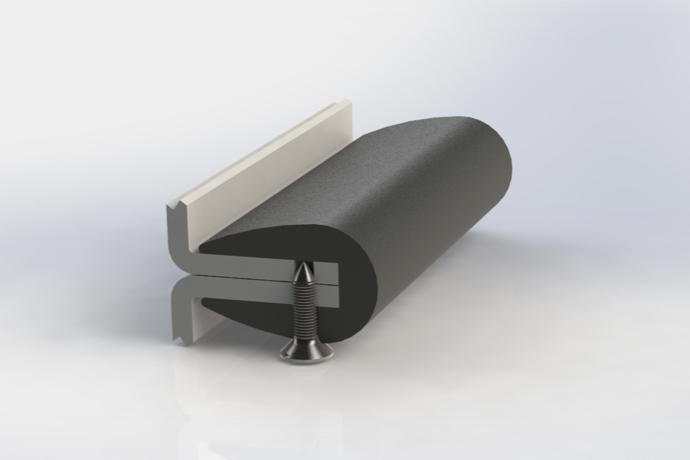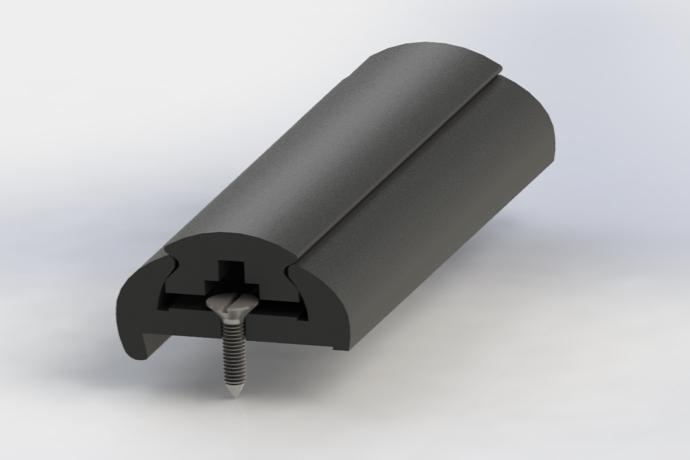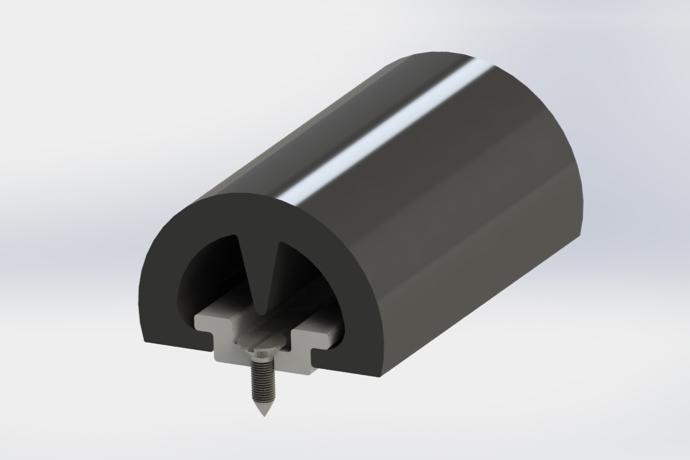Our fenders are ideal for protecting your boat, pontoon or other marine vessel from bumps or knocks in the event of impact. Our fenders can also be used in industrial settings, such as docking bays and factories, where you need a level of impact protection. All of our fenders are designed for DIY installation.
We manufacture our fenders from marine quality EPDM rubber or PVC depending on whether you require a non-marking material or rubber which will stay the same hardness all year round. We also supply a range of Aluminium fenders.
Type 1: Fitting D Fenders

D fenders are easy to fit by feeding a fixing bar through the centre of the hollow ‘D’ and securing in place.
Start by feeding the fixing bar through the centre of the ‘D’. Line up the fender with the side of the boat and with a lubricated drill bit, drill through the top face of the ‘D’, fixing strip and gunnel. Using self-tapping screws or bolts fasten the fender to the boat every 150mm to 200mm.
You should use a plugging cord (black or pvc) to plug the drill holes. Cut the plugging cord long enough to touch the screw / bolt heads and secure in place with a Polyurethane adhesive. Once the adhesive has set, trim the plug so that it is flush with the top of the fender.
View our range of EPDM D Fenders and PVC D Fenders.
Type 2: Fitting U Fenders

U fenders are available in a range of sizes. They normally locate onto a flange protruding from the side of the boat.
PVC fenders, whilst non-marking, are often slightly harder than the rubber equivalent. We recommend that you soften PVC fenders in hot water to make the section more flexible and easier to work with.
To fit, push the fender over the flange or edge and fasten in place by using self-tapping screws or rivets through the underneath.
View our range of EPDM U Fenders and PVC U Fenders.
Type 3: Fitting Rigid PVC and Aluminium Fenders

Our rigid PVC and aluminium fenders are available in a range of sizes and colours. Aluminium fenders are etched, polished and anodised so is often used on motorboats and yachts where you are looking for an attractive boat fendering solution.
With the end approximately 1.8 metres below the bow, line up the fender with the gunnel. Drill and secure with self-tapping screws or rivets every 225mm to 300mm. Pull the fender around the bow fastening as you go. Butt up the next length and fasten in place.
For tight bends it is advisable to put some wire in the corners of the internal grooves to prevent the fender collapsing and hindering the fitting of the insert.
View our range of Rigid PVC Fenders and Aluminium Fenders.
Type 4: Fitting Easy Fit D Fenders

Our Easy Fit ‘D’ fenders are designed for DIY installation and are available in a range of sizes and colours. These fenders have hidden fixings so offer an attractive boat fendering solution.
Start by drilling holes through the easy fit fender track and then secure it against the side of the boat with self-tapping screws. Locate one edge of the fender over one ledge of the track and then stretch the other edge of the fender over the other ledge of the track.
View our range of Easy Fit ‘D’ Fenders.